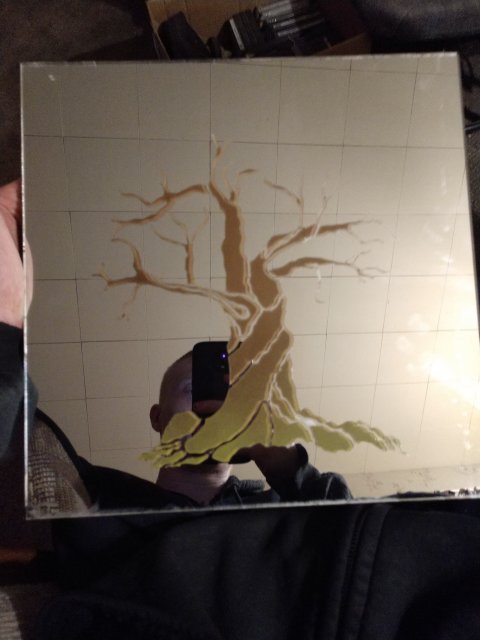I created some notes on my facebook group about nuchal hump, wanted to get some ideas from here
The primary factor of nuchal hump size is genetics. The primary role of nuchal hump is sexual dimorphism.
RD shared this research paper
I am going to quote few things from it
I am not sure about what all is included in 'situation conducive to breeding'. May be adding rocks or terra cotta pots for fish to let him make territory as in follows.
 Ozzie73
and some member on the forum have also observed this behavior. Having another male in nearby tank affected the nuchal hump size in positive way. I think this is why "grooming techniques" (showing mirror to flowerhorn) works as well.
Ozzie73
and some member on the forum have also observed this behavior. Having another male in nearby tank affected the nuchal hump size in positive way. I think this is why "grooming techniques" (showing mirror to flowerhorn) works as well.
I saw people not recommending leaving the mirror 24x7 or having another fish with a clear divide as it would stress the fish or it would start ignoring the intruder.
Overall good health (result of a good diet and water quality) is also important, because a dying fish won't get a big hump.
The primary factor of nuchal hump size is genetics. The primary role of nuchal hump is sexual dimorphism.
RD shared this research paper
I am going to quote few things from it
The factors determining the presence and size of the nuchal hump are complex, but they tend to assure that maximum dimorphism occurs at the time of pair formation. A typical progression makes the point: a male with no nuchal hump is brought into the laboratory and put into a situation conducive to breeding.
I am not sure about what all is included in 'situation conducive to breeding'. May be adding rocks or terra cotta pots for fish to let him make territory as in follows.
When kept in small groups, say two to seven fish, in aquaria of 100 to 400 1 capacity, there is almost continual fighting. This results in injury and ultimately the death of weaker individuals. There appear to be three factors contributing to this. First, the subordinate fish cannot move far enough away from the attacker, as it would in nature. Second, being confined to the same place, the fish tend to become territorial, which often leads to breeding, and thus they are not in the same behavioral set as schooling wild fish. Third, in small groups the dominant fish seems to sustain its attacks on selected individuals. Given that the fish must be held in aquaria, their damaging aggressiveness can be held in check in two ways: (1) There should be no objects on the bottom, such as terra cotta pots or large rocks, that the fish can use as a focal point of territorial activity; and (2) ideally, the aquarium should have no corners. In combination with this, but much more effective, the fish should be crowded, say one adult per 15 to 25 liters in a large aquarium. This technique works well, but with crowding one must manage the water chemistry with considerable care.
Groups of males kept without females in large tanks regularly develop enormous nuchal humps that persist. The humps on such males often become grotesque, and far exceed anything seen in nature. The behavior of these males suggests that aggressive behavior might be involved in stimulating the development of the hump.
I saw people not recommending leaving the mirror 24x7 or having another fish with a clear divide as it would stress the fish or it would start ignoring the intruder.
Overall good health (result of a good diet and water quality) is also important, because a dying fish won't get a big hump.



